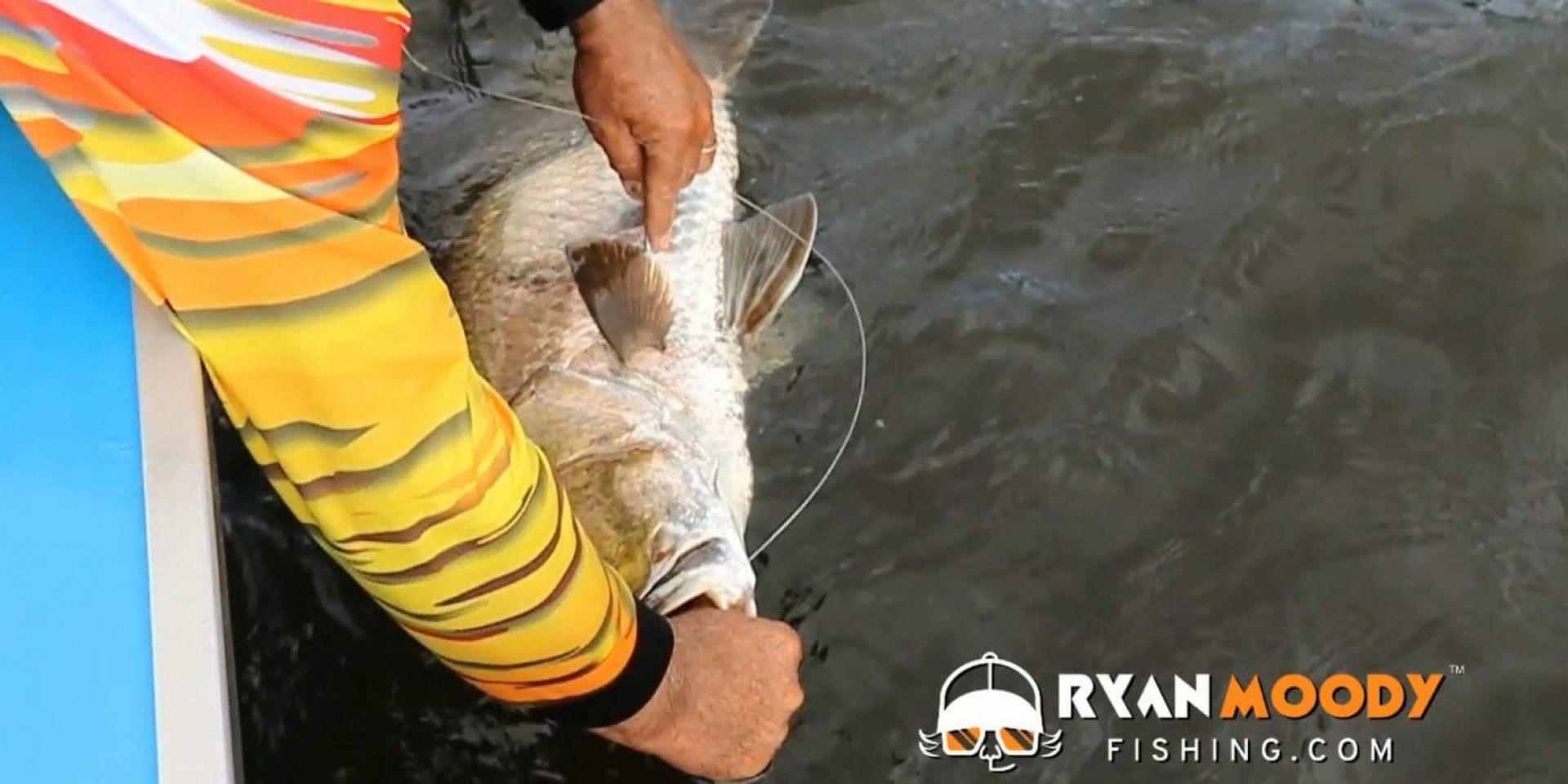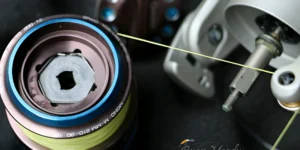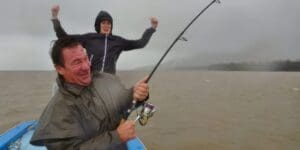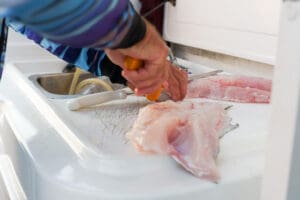With the popularity of catch and release fishing, questions are often raised about the best way to release fish with barotrauma.
When fish are brought to the surface quickly from depth, gas in the swim bladder can expand and not have time to vent naturally, resulting in a bloated appearance and preventing fish from returning to a comfortable depth.
In severe cases the pressure can push the stomach into the fishes mouth, cause the intestines to protrude from the anus and even rupture the swim bladder.
If not corrected, the fish can die from a number of causes; damage to the internal organs, easy target for predators, floating and exposure to the elements.
Obviously this defeats the purpose of fishery management laws such as minimum size limits and daily catch restrictions.
There are three primary ways to arrest the symptoms of barotrauma and give the fish a good chance of survival.
- Release Weights
- Release cage
- Venting
It does however depend on the fish species (some are more susceptible than others) and the depth they are caught.
For example, fingermark suffer severe and fatal barotrauma if caught in waters greater than 10 metres in depth. You can view the effects of barotrauma on fingermark in this video by NT Govt.
This video by Queensland Fisheries explains all three;
Release Weights
In Western Australia it is mandatory in the West Coast Bio region to carry a release weight on board when fishing for demersal species.
A release weight consists of a lead weight attached to a barbless hook to assist the fish return back to the bottom.
A few jigs on the weight and the hook will bounce out of the fish releasing it at depth.
Release Cage
A release cage is a bottomless wire cage placed over the floating fish. The cage is weighted and pushes the fish to the bottom. Once stabilized, the fish can swim out of the cage.
We have never tried a release cage and while watching the Fisheries Qld video, looks like it may be a calm water only proposition.
Venting with a needle
In our previous post on impoundment barra techniques, Ryan mentioned using a bone marrow remover for venting fish and demonstrates the technique in the video below;
He was given the tool by a medical practitioner many years ago although we have managed to find a similar tool, the T-handle Jamshidi, however at this point the supplier does not sell to the general public.
They are called a “bone marrow aspiration needle” for those that want to google further.
Here is the one we use.
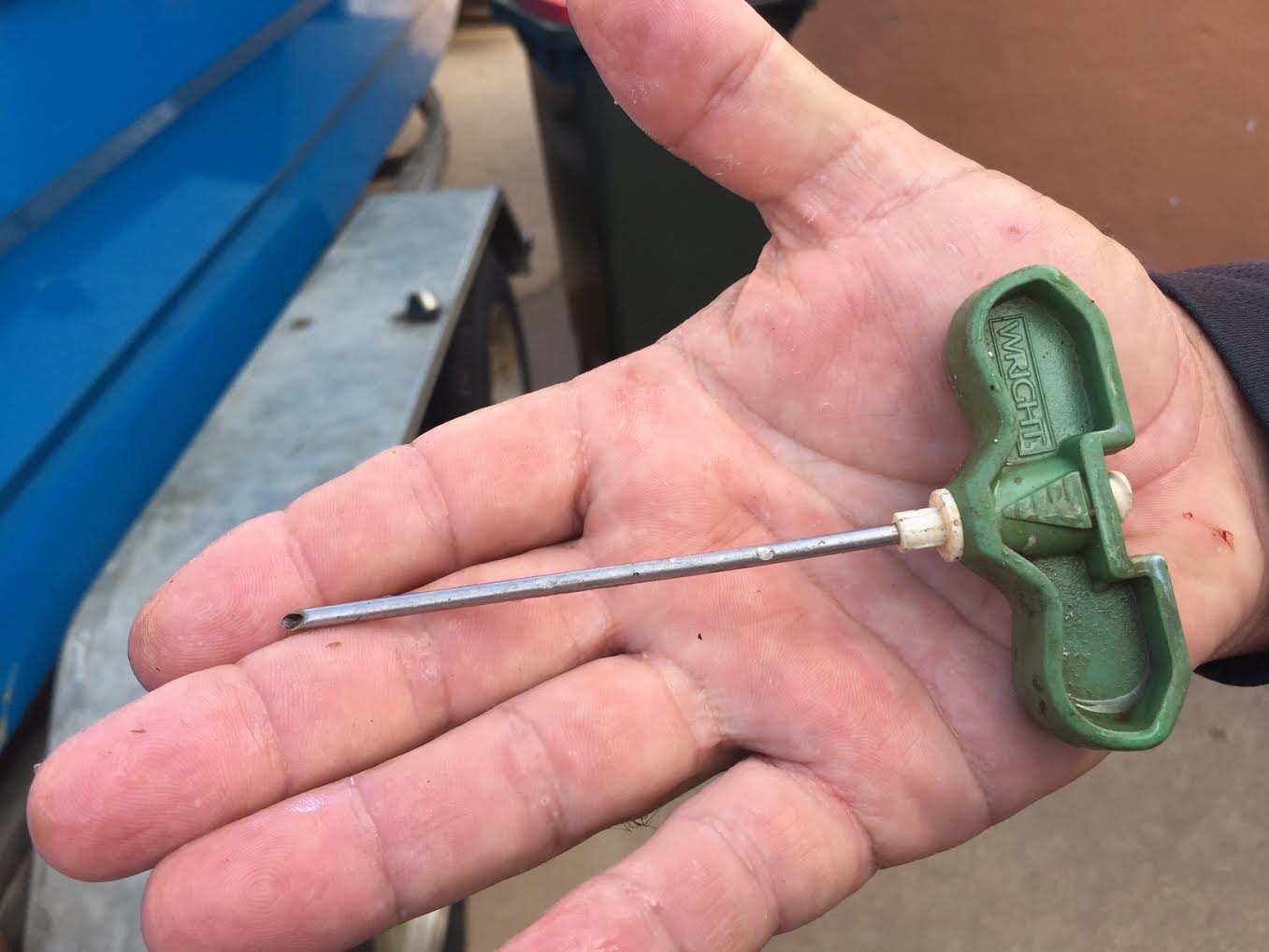
In Florida, venting was compulsory until 2014, so there are a number of devices available, called venting tools. We haven’t used any of them so we cannot recommend, however here are some of the ones we found:
Obviously not all fish need to be vented, and if the need arises, it’s best to do so as quickly as possible to reduce further harm.
There is no need to puncture the organs protruding from the fish (stomach and intestines) as these will return to their usual size within 2-3 hours after venting the swim bladder, behind the dorsal fin as shown in the videos.
To eliminate the problem entirely, we also recommend (once you’ve caught what you need for a feed) moving to shallower water if wanting to continue with catch and release.




